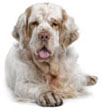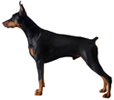Randy Kidd, DVM, PhD
Oats are always at the top of my list of recommended herbs. More formally known as Avena sativa, inexpensive and readily available oats have a long list of benefits, from simply nutritional to curative for many conditions. It's not surprising that oats have a long history of adding to our animal's health, as well as our own, whether taken internally or applied directly to the skin.
Here are some benefits of oats that you should know about and just a few of the reasons why I like to recommend them:
- Organic oats are inexpensive and readily available at health food and grocery stores. This makes it very easy to add oats to your pet's food, and/or to make up any number of oat-y concoctions to improve your pet's health.
- There are plenty of good, ready-made products that contain oats. Popular oat-containing products include: shampoos, conditioners, topical applications for skin conditions, and capsules and tinctures for a more concentrated dose of the healing essences of oats.
- Oats are nutritionally beneficial, and their healing powers can be utilized by applying oaten teas or poultices directly to the skin.
- To get the inner benefits of herbal oats all you have to do is cook some oatmeal and add it to your pet's food. Or, if you want to add even more oat power, there are tinctures and capsules available.
Adding oats to a pet's diet is a simple way to impart many nutritional benefits. Besides nutritional benefits, many other benefits, from nervine to disease treatment, can be realized, too. First, let's take a closer look at some of the many health benefits associated with oats when they are simply added to a pet's diet.
Nutritive - Simply put, oats are nutritious, being naturally high in "good" nutrients and low in "bad" ones.
Oats are high in:
- Protein (interestingly, wild oats contain from 27-37% protein while cultivated varieties average about 17%). According to the World Health Organization, oat protein is equivalent in quality to soy protein. So, equal to meat, milk and egg protein.
- Soluble fiber (the fiber that helps keep cholesterol levels low)
- Levels of iron, manganese, zinc, and B vitamins (pantothenic acid, B5, and folate, B9)
Oats are low in:
- Gluten (some is present, but not nearly as much as in wheat)
- Genetically Modified Organisms (so far, oats are not grown using GMO)
Nervine - Oats are considered a nervine, an herbal compound that acts as a general nerve tonic, calming the nerves when necessary, stimulating their activity when needed. Oats are used for treating a variety of nervous disorders.
Herbal - Oats benefit several body organs and systems, including: skin, nervous system, stomach, spleen, lungs, and the urinary and reproductive systems. Herbal qualities of oats include:
- Antispasmodic
- Cardiac
- Diuretic
- Emollient
- Nervine
- Stimulant
Antitumor - Oats contains the antitumor compound b-sitosterol.
Digestive - Acting as a digestive aid to calm the intestinal tract.
Hormonal - Used to achieve hormonal balance. Also used as a uterine tonic.
Oats are also cholesterol lowering and reportedly good for treating a wide variety of diseases in humans and animals, including: inflammatory conditions, mental or physical exhaustion, depression, dyspepsia, insomnia, fevers, sexual dysfunctions and as a tonic during menopause or after parturition.
Oats can also be beneficial when applied externally (topically). Remember that an animal's skin is its largest organ, and there is an active absorption of many substances, thus adding whole-body benefits from external applications of oats. These unique health benefits can include:
- Anti-inflammatory and Calming - soothes itchiness and eczema, thus helping calm the animal while he heals.
- Healing - High levels of minerals and vitamins in the seeds may help with skin healing.
Here are some tips on how to use oats topically:
- Shampoos - Oatmeal shampoos are readily available in most pet product outlets, and many have added healing herbs. These shampoos are generally mild, calming, anti-itch, anti-inflammatory, and healing for the skin. You can make your own oatmeal shampoo, too. It's nothing more than a colloidal suspension of oats, after they've been soaked in water, with something added to cleanse the pet's hair and skin and perhaps something else added to moisturize and/or treat the skin.
- Soak - For more anti-itch and anti-inflammatory actions, consider a soak. Commercial soaks are available or, again, you can make your own. Put a handful of oatmeal in a nylon sock and attach the sock over the bathtub tap. Fill the tub to desired level with water filtered through the oats. Let the pet soak in the tub for 15 to 20 minutes (or for however long they will sit still). Rinse well and dry. Remember, pets prefer tepid water, and cannot tolerate really hot baths.
- Dry "Shampoo" - to help dry oily-itchy skin. Roast some ground or rolled oats until slightly browned. When they have cooled to room temperature, work them into the pet's hair so they come into contact with the skin. Let stand for about 15-30 minutes, then comb out. Try this on a small area first, as some hair coats don't lend themselves well to this type of application.
- Oat Poultice - For "hot spots" or other localized skin irritations, make a slurry of ground oats and water, wrap the slurry in cheese cloth or a tea bag (available from health food stores). Or, soak a clean washcloth in the mixture, and apply as a poultice directly to the affected area. Leave on for 15 minutes or so (or as long as the pet will tolerate it). Repeat several times a day. Healing herbs such as calendula, chamomile, or lavender can be added to the original mixture to further enhance healing.
Here are more tips on other ways to use oats for better pet health:
- Oat Tea - Use about a tablespoon of organic oats, steep for 15-20 minutes in a cup of hot water. Pour enough of the tea over the pet's food to moisten it. Use several times a week for its beneficial effects on the nervous and intestinal systems.
- Oatmeal for Breakfast - Increase fiber intake and make use of oat's medicinal qualities by mixing cooked oatmeal into pet food several times a week. Start out with small amounts and increase to about a tablespoonful or so for every 10-20 pounds of animal.
- Grow Your Own Crop - Oats are easy to grow, indoors or out. Simply stick some organic seeds in the ground (in a pot or tray if growing them indoors), add water and sunlight, and wait a few weeks until the stems are a couple of inches tall. Let your pet eat from the crop, or harvest with scissors and mix the cut leaves into his food. Oat sprouts are also easy to grow, and some critters like them better than grasses. Oats are sometimes marketed, while in seed form, as "Cat Grass", grown and fed to cats as a treats or as an aid to digestion.
- Medicinal Oats - Tinctures, capsules containing oats and other forms of "medicinal" oats (Avena sativa) can be used for a variety of conditions. Check with your holistic vet for proper uses and dosages.
- Flower Essences (Bach Flowers®) - Wild oats, a different species of oats from the cultivated ones, is a remedy used to help restore direction and nervous energies.
- Homeopathic - Avena sativa is a minor remedy that may be indicated for the animal suffering from nervous exhaustion, sexual debility, or nervous tremors. Check with your homeopathic practitioner for more on how oats are used in homeopathy for pets.
Well, those are some of the amazing properties that nature gives us in oats. You'll want to use organically grown (wild) oats, whether for dietary or topical use, as the nutritive values of organically grown oats are much higher than commercially produced crops, and you don't run the potential risk of pesticide or herbicide residue. Plus, organic farming methods are good for the environment.









 Most all dogs will get along well with children if they are raised with them. However, some breeds have a protective streak in them and may naturally become aggressive towards children around meal time (although this should not be tolerated), or aggressive to strange children. They possibly will not see the children as being higher then themselves in the "pack order" and may try to dominate them.
Most all dogs will get along well with children if they are raised with them. However, some breeds have a protective streak in them and may naturally become aggressive towards children around meal time (although this should not be tolerated), or aggressive to strange children. They possibly will not see the children as being higher then themselves in the "pack order" and may try to dominate them. 
 Dogs can either serve as watchdogs or guard dogs. A watchdogs job is to bark and raise the alarm when a stranger enters your property. Many small dog breeds make great watch dogs. Whereas a guard dog's job is to look intimidating and protect his family if the situation arises.
Dogs can either serve as watchdogs or guard dogs. A watchdogs job is to bark and raise the alarm when a stranger enters your property. Many small dog breeds make great watch dogs. Whereas a guard dog's job is to look intimidating and protect his family if the situation arises. 


































































































































































